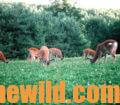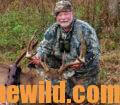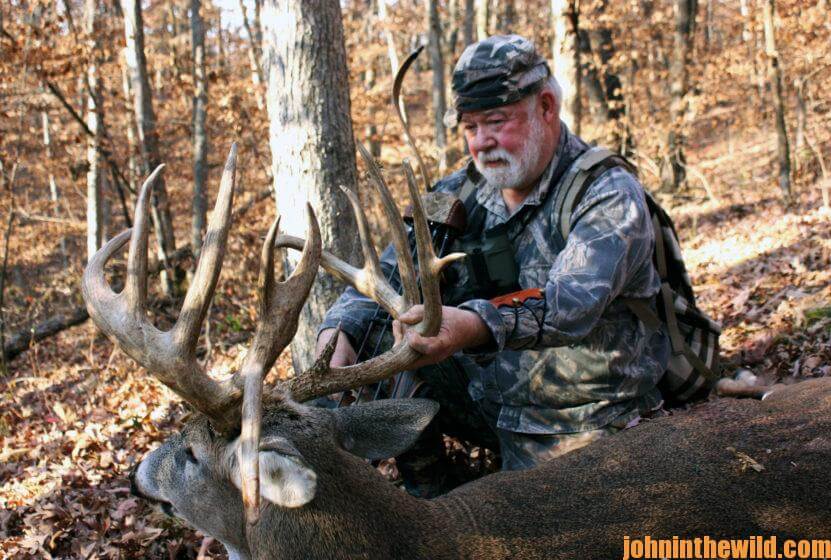Editor’s Note: Two of the nation’s most-legendary deer hunters in recent years are 70+-year-old Gene and Barry Wensel from Iowa. Their webpage is titled Brothers of the Bow http://www.brothersofthebow.com, because they are twin brothers, and they both deer hunt with bows. Gene has written many magazine articles and several books on deer hunting. Barry and Gene were two of the early pioneers who taught deer hunting at seminars and consumer shows all over the country and promoted bowhunting for deer, starting in the 1970s.
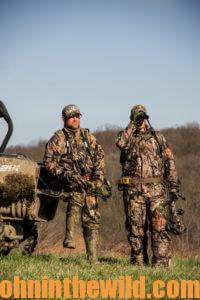 1) Realize that you won’t take an older-age-class buck if you’re not hunting land where one lives or passes through. Most hunters spend more time hunting than they do scouting, but the first step to taking a big buck is to find that big buck first. Then gain permission to hunt on or lease the property where that big buck lives. The easiest and the best time to find a big buck is long before the season arrives. I know one man who hunts in New York and New Jersey, and he may take 100 deer per year from properties that have severe overpopulation. However, more than likely, he’ll never take a big deer because of the high numbers of deer. Those combined deer eat up a lot of nutrition and generally are much younger than trophy bucks will be. They just don’t live long enough to put on heavy body weights and grow big antlers.
1) Realize that you won’t take an older-age-class buck if you’re not hunting land where one lives or passes through. Most hunters spend more time hunting than they do scouting, but the first step to taking a big buck is to find that big buck first. Then gain permission to hunt on or lease the property where that big buck lives. The easiest and the best time to find a big buck is long before the season arrives. I know one man who hunts in New York and New Jersey, and he may take 100 deer per year from properties that have severe overpopulation. However, more than likely, he’ll never take a big deer because of the high numbers of deer. Those combined deer eat up a lot of nutrition and generally are much younger than trophy bucks will be. They just don’t live long enough to put on heavy body weights and grow big antlers.
2) Don’t take a trophy buck too early, just like you can’t pick fruit before it gets ripe. By that I mean, if you harvest a lot of young bucks on the property you hunt, the chance of having a big buck on that land will be almost nonexistent. I live in southern Iowa, and I’m about 15 miles from the Missouri state line. Missouri produces numbers of big bucks, but an important factor to remember is the genetics required to produce trophy bucks doesn’t stop at the Missouri state line. However, if you compare the size of bucks in southern Iowa to the bucks in Missouri, you’ll quickly learn Missouri bucks in general are bigger than southern Iowa bucks. One of the reasons for this is that Missouri’s gun season opens in the middle of November, which is right in the peak of the rut. Hunters with centerfire rifles shoot big bucks during the rut. In Iowa the gun season doesn’t open until December, which is after the rut. So, during the peak of the rut, about the only hunters in the woods in Iowa are bowhunters and small- game hunters. In Iowa, we have more deer that reach maturity during bow season and the rut than we do during gun season, which takes place after the rut. So, there’s a trade-off. The people who can hunt during the peak of Missouri’s rut may take big bucks but also young bucks, due to the rut. In Iowa, our peak of the rut happens long before gun season, so bowhunters in Iowa have a chance to take bigger bucks, because the gun hunters can’t hunt during the pre-rut or the rut. However because bowhunters have to get much closer to deer to take them than gun hunters, we’re limited to the distance we can shoot accurately. We give up being able to shoot bucks at longer ranges to hunt the pre-rut and the rut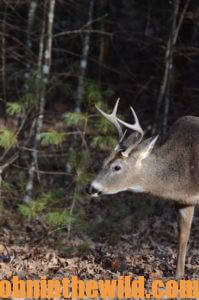 .
.
3) Never forget that scouting is more important than hunting, patience is more important than shooting, and persistence is an absolute necessity. Many hours of scouting before, during and after the season are required to consistently find and take older-age-class bucks. First, you have to find a mature buck. Then you can use your trail cameras to pattern that buck and to know where to find that buck at different times during the year. For that reason, you may have to hunt that buck for 1-3 years before you find the right place at the right time to get a shot at that buck.
4) Hunt when other hunters don’t, and use techniques that most hunters won’t use. I know plenty of hunters who won’t hunt in the rain, however, deer do move in the rain at times. I think many older-age-class bucks have learned that most hunters don’t hunt in the rain. Therefore on rainy days, there’s a good chance that you can get a shot at a mature buck you’ve found. I’ve got all kind of rain gear, however if my rain gear makes noise, I’ll hunt in the rain without any rain gear. I’m willing to get wet or fairly wet to take a mature buck. Most hunters aren’t willing to pay that price for a mature buck. Are you?
5) Double your odds. Most hunters will hunt 2 hours in the morning and 2 hours in the afternoon. However, if you hunt 8 hours a day, you’re doubling your chances for taking an older-age-class buck, especially during the rut. Just like many mature and big bucks have learned that often hunters don’t hunt in the rain, I think most mature bucks have learned that fewer hunters are in the woods from 10:00 am until 2:00 pm.
6) Be a hunter not a shooter. A shooter is someone who can aim and shoot accurately. When he goes hunting, if he doesn’t shoot something, he feels like he’s had a lousy hunt. However, hunting is  the ability to find an animal you want to take, get in a position to take that animal and take that deer, even if he appears at a distance. I think we’ve lived through a generation or so where shooting a deer has become far more important than hunting a deer. I think one mistake that has been made in recent years is we take children – really young children – out to a spot – possibly a green field where we’re confident that a deer will be so that child can shoot it. The youngster shoots the deer, and he thinks that’s what hunting is. We’ve skipped the steps of teaching them how to squirrel hunt, how to rabbit hunt, how to read deer sign and how to pick out a place where they can locate deer. We’ve given them the trophy before they’ve learned how to run the race. In many cases, I believe that’s why shooting has replaced hunting, and a successful hunt seems to depend on whether you come in with an animal or not. Don’t get me wrong. I’m not against taking children out in the woods. Actually I’m all for it, but we need to teach them how to hunt, why to hunt and where to hunt. They need to build on success like finding places where squirrels live and taking squirrels, pinpointing places where rabbits live and taking rabbits and learning where deer live, eat, sleep, water, travel and breed – long before they shoot any deer. For instance, my dad didn’t allow Barry and me to harvest a deer until we were 14-years old.
the ability to find an animal you want to take, get in a position to take that animal and take that deer, even if he appears at a distance. I think we’ve lived through a generation or so where shooting a deer has become far more important than hunting a deer. I think one mistake that has been made in recent years is we take children – really young children – out to a spot – possibly a green field where we’re confident that a deer will be so that child can shoot it. The youngster shoots the deer, and he thinks that’s what hunting is. We’ve skipped the steps of teaching them how to squirrel hunt, how to rabbit hunt, how to read deer sign and how to pick out a place where they can locate deer. We’ve given them the trophy before they’ve learned how to run the race. In many cases, I believe that’s why shooting has replaced hunting, and a successful hunt seems to depend on whether you come in with an animal or not. Don’t get me wrong. I’m not against taking children out in the woods. Actually I’m all for it, but we need to teach them how to hunt, why to hunt and where to hunt. They need to build on success like finding places where squirrels live and taking squirrels, pinpointing places where rabbits live and taking rabbits and learning where deer live, eat, sleep, water, travel and breed – long before they shoot any deer. For instance, my dad didn’t allow Barry and me to harvest a deer until we were 14-years old.
I think children shouldn’t be allowed to do some things until they’re mature enough to understand why and how to do these things. For instance, they shouldn’t be: going on dates, driving vehicles, working fulltime jobs, voting, getting married and/or holding political office until they’re mature enough to handle the responsibilities that go with each of these privileges. I think the same is true of deer hunting. If you want to teach a young person to be able to find and take a mature buck, I believe you need to teach that young person to hunt before you allow them to harvest a deer. Of course, you may disagree with me, but that’s okay. 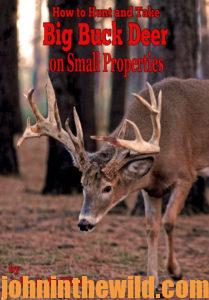
To learn more about hunting deer, check out John E. Phillips’ book, “How to Hunt and Take Big Buck Deer on Small Properties,” available in Kindle, print and Audible versions at (http://amzn.to/1vIcj4m). You may have to copy and paste this link into your browser. (When you click on this book, notice on the left where Amazon says you can read 10% of the book for free).
Tomorrow: Gene Wensel Talks Camo Clothing

